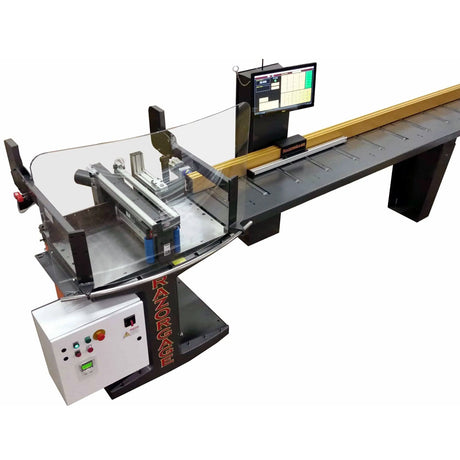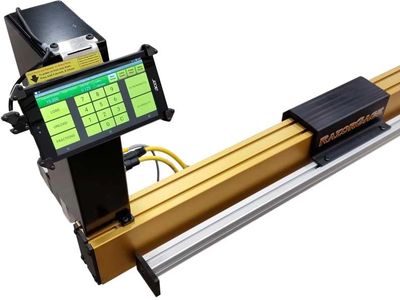Material Positioning Systems are technological answers used in manufacturing and production environments to appropriately circulate, align, and region materials during diverse ranges of the procedure. These structures assist lessen human error, boom precision, and streamline operations. In 2025, as industries preserve to embrace automation and clever manufacturing facility concepts, Material Positioning Systems are getting greater essential than ever. Their integration with AI, robotics, and sensor-primarily based technologies guarantees extra performance, exceptional manipulation, and employee safety throughout a couple of sectors. This article explores their growing relevance through ten essential factors, shedding mild on their effect across contemporary industry.
1. The Evolving Landscape of Manufacturing Demands Precision
The manufacturing enterprise in 2025 has reached a level wherein precision and consistency are now not elective however crucial. The era of manual modifications and approximations has been in large part replaced via records-pushed, automated systems. Material Positioning Systems offer the accuracy needed to meet those high needs. Whether it’s aligning sheet steel on a press brake or positioning components on an assembly line, the need for genuine placement has intensified. As product tolerances reduce and consumer expectancies rise, manufacturers depend on those systems to keep away from waste, minimize defects, and hold uniformity in the course of manufacturing.
2. Integration with Industry 4.0 and Smart Factories
Material Positioning Systems play a critical position in Industry four.Zero, the present day section of commercial development characterised by using connectivity, automation, and actual-time statistics alternate. In clever factories, sensors are embedded in machines and conveyor paintings in coordination with positioning structures to dynamically adjust operations based totally on the fabric’s traits and the actual-time manufacturing necessities. These structures assist synchronize movement throughout robot arms, CNC machines, and other computerized equipment, growing a fluid and sensible production environment. The seamless integration of these systems into virtual frameworks complements productivity and flexibility.

3. Enhanced Worker Safety and Ergonomics
Safety is a top priority in today’s business landscape, especially with tighter regulations and a greater emphasis on employee nicely-being. Material Positioning Systems assist lessen the want for guide lifting, pushing, or aligning heavy or sharp items, thereby decreasing the risk of workplace injuries. By automating obligations that historically required physical exertions, those systems guard workers from repetitive strain injuries, cuts, and different dangers. The result is a safer, greater ergonomic painting environment in which people can focus on monitoring and supervising in place of physically manipulating substances.
4. Boosting Production Efficiency and Speed
In 2025, time is a critical factor for competitive gain. Material Positioning Systems considerably reduce the setup and cycle times required to technique every unit. Faster positioning approaches much less downtime between operations, permitting factories to grow throughput without compromising high-quality. These systems can reposition objects inside milliseconds and with outstanding accuracy, which interprets into full-size time financial savings over the route of a production shift. The potential to hastily adapt to exceptional product specs further provides to their price in excessive-blend, low-extent production scenarios.
5. Reducing Waste and Operational Costs
Every misalignment or mistakes in fabric placement can result in scrap, remodel, or maybe gadget damage. Material Positioning Systems deal with this through ensuring every piece is precisely where it wishes to be, every time. This precision facilitates producers to avoid expensive errors and decrease material waste, which also supports sustainability efforts. By improving first-skip yield and reducing dependency on first-rate managed inspections, those systems contribute to leaner operations. Over time, they result in substantial price reductions in both materials and labor, which is essential for profitability in aggressive markets.

6. Application Across Diverse Industries
While historically associated with car and heavy equipment, Material Positioning Systems at the moment are considerable across loads of sectors. In electronics manufacturing, they help with micro-assembly and PCB positioning. In the food and beverage enterprise, they ensure right placement of packaging substances and components. In aerospace, wherein tolerances are extraordinarily tight, those structures allow particular alignment of complex components. The growing versatility of those technologies in the 2025 method they’re tailored for industry-unique needs, imparting custom designed functionality relying on the software and cloth type.
7. Integration with Robotics and Artificial Intelligence
The convergence of robotics, AI, and Material Positioning Systems is one of the maximum thrilling traits in current manufacturing. Robotic fingers ready with clever vision systems and sensors can now adapt in real-time to shifting positions or surprising adjustments in fabric properties. AI algorithms analyze performance information from positioning structures to expect protection desires, optimize workflows, and even make self-sustaining decisions. This level of integration transforms positioning structures from passive gear into energetic components of a clever production atmosphere. In 2025, this synergy is key to unlocking new ranges of autonomy and efficiency in manufacturing.
8. Quality Control and Real-Time Monitoring
Another vital gain of Material Positioning Systems is their contribution to nice control. With built-in sensors and feedback loops, those structures can detect minute deviations from anticipated positions and make immediate corrections. Real-time monitoring permits supervisors to pick out anomalies and intrude early inside the method before issues expand. In regulated industries consisting of pharmaceuticals and medical tool manufacturing, keeping strict first-class standards is non-negotiable. These structures no longer most effectively preserve compliance however additionally offer the traceability and documentation required for audits and certifications.
9. Scalability and Adaptability for Future Growth
As groups develop, their production desires evolve. Material Positioning Systems are designed with scalability in thoughts. They may be reprogrammed or changed to deal with new products, specific sizes, or converting workflows without sizable downtime. In 2025, modular structures that aid plug-and-play capability are becoming extra not unusual, allowing manufacturers to scale operations quickly and correctly. This adaptability is mainly critical for companies embracing mass customization or experiencing fluctuating call for. By selecting scalable answers, manufacturers destiny-evidence their funding at the same time as keeping flexibility.
10. The Role of Safety Systems Like Automatic Saw Stop in the Future of Manufacturing
In the current production environment, precision and safety go hand in hand. As Material Positioning Systems emerge as extra superior, their synergy with safety mechanisms which include the automatic saw stop turns into even greater applicable. For instance, in woodworking or metal reducing operations, positioning structures determine the exact placement of materials before slicing, while the automated noticed prevent gives a critical layer of safety by using halting equipment immediately if touch with flesh is detected. This coordination not only ensures accuracy in production but additionally dramatically reduces injury dangers. In 2025, as regulatory bodies put in force stricter safety standards, the integration of such technologies isn’t simply beneficial—it’s essential. Together, Material Positioning Systems and gadgets just like the computerized saw stop are helping redefine what it approaches to have a secure, smart, and efficient production operation.
By leveraging the overall talents of Material Positioning Systems, industries can meet the high expectations of the contemporary marketplace at the same time as maintaining worker safety and operational performance. In a generation wherein each second counts and each mistake is highly-priced, these systems are proving to be crucial tools for ahead-wondering producers.





